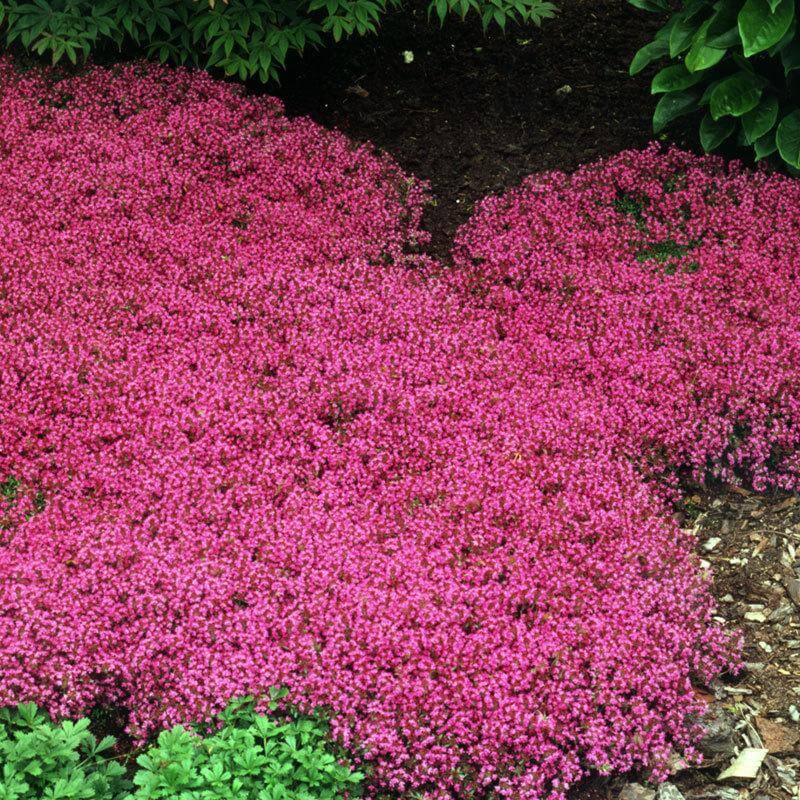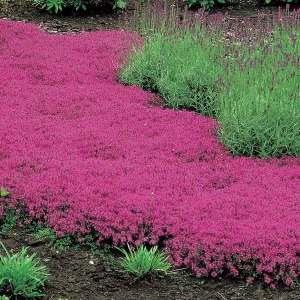
With its deep, lavender-red flowers, this creeping perennial herb creates a lovely ground cover. Because it can withstand light foot activity and releases a pleasant scent when leaves are crushed, it is ideal for filling the spaces between stepping stones on pathways. when let to trail over the edges, adds grace to mixed beds or pots.

The herbaceous perennial Thymus praecox ‘Coccineus’, often known as red creeping thyme, is a member of the mint (Lamiaceae) family and is drought-tolerant and sun-loving. Despite having a delicate appearance, this thyme adapts well to a variety of well-draining situations and can even stand some mild foot traffic. This makes it a low-maintenance plant that is also good for beginners. Red creeping thyme is hardy to Zones 4–9, and in milder climates, it stays evergreen. In the fall, the leaves become bronze. Thymus serpyllum is one of the popular names for this plant. Other names are mother of thyme and scarlet thyme.

Red creeping thyme is a great choice for individuals looking to preserve biodiversity since, like other thyme species, it attracts butterflies and supports beneficial insects. The red creeping thyme is also highly effective as a deer repellent. The densely colored summer blossoms of red creeping thyme, which have a spread of 12 to 18 inches and a height of 4 inches, range from purple to scarlet. This kind of growth also fills in problematic areas in the landscape and controls weed development.
The mild water needs of red creeping thyme are met by drying between waterings. Since creeping thyme is drought tolerant, rainfall alone may be sufficient in some areas and seasons. It’s a good idea to regularly water thyme throughout the hot, dry summers. Watch your plant to see if there are any signs of what it requires in your area. Younger plants require more routine watering.
